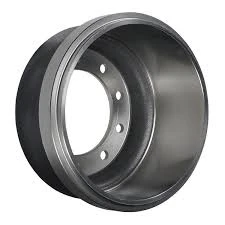
-
 Afrikaans
Afrikaans -
 Albanian
Albanian -
 Amharic
Amharic -
 Arabic
Arabic -
 Armenian
Armenian -
 Azerbaijani
Azerbaijani -
 Basque
Basque -
 Belarusian
Belarusian -
 Bengali
Bengali -
 Bosnian
Bosnian -
 Bulgarian
Bulgarian -
 Catalan
Catalan -
 Cebuano
Cebuano -
 Corsican
Corsican -
 Croatian
Croatian -
 Czech
Czech -
 Danish
Danish -
 Dutch
Dutch -
 Kiingereza
Kiingereza -
 Esperanto
Esperanto -
 Estonian
Estonian -
 Finnish
Finnish -
 French
French -
 Frisian
Frisian -
 Galician
Galician -
 Georgian
Georgian -
 German
German -
 Greek
Greek -
 Gujarati
Gujarati -
 Haitian Creole
Haitian Creole -
 hausa
hausa -
 hawaiian
hawaiian -
 Hebrew
Hebrew -
 Hindi
Hindi -
 Miao
Miao -
 Hungarian
Hungarian -
 Icelandic
Icelandic -
 igbo
igbo -
 Indonesian
Indonesian -
 irish
irish -
 Italian
Italian -
 Japanese
Japanese -
 Javanese
Javanese -
 Kannada
Kannada -
 kazakh
kazakh -
 Khmer
Khmer -
 Rwandese
Rwandese -
 Korean
Korean -
 Kurdish
Kurdish -
 Kyrgyz
Kyrgyz -
 Lao
Lao -
 Latin
Latin -
 Latvian
Latvian -
 Lithuanian
Lithuanian -
 Luxembourgish
Luxembourgish -
 Macedonian
Macedonian -
 Malgashi
Malgashi -
 Malay
Malay -
 Malayalam
Malayalam -
 Maltese
Maltese -
 Maori
Maori -
 Marathi
Marathi -
 Mongolian
Mongolian -
 Myanmar
Myanmar -
 Nepali
Nepali -
 Norwegian
Norwegian -
 Norwegian
Norwegian -
 Occitan
Occitan -
 Pashto
Pashto -
 Persian
Persian -
 Polish
Polish -
 Portuguese
Portuguese -
 Punjabi
Punjabi -
 Romanian
Romanian -
 Russian
Russian -
 Samoan
Samoan -
 Scottish Gaelic
Scottish Gaelic -
 Serbian
Serbian -
 Sesotho
Sesotho -
 Shona
Shona -
 Sindhi
Sindhi -
 Sinhala
Sinhala -
 Slovak
Slovak -
 Slovenian
Slovenian -
 Somali
Somali -
 Spanish
Spanish -
 Sundanese
Sundanese -
 Swahili
Swahili -
 Swedish
Swedish -
 Tagalog
Tagalog -
 Tajik
Tajik -
 Tamil
Tamil -
 Tatar
Tatar -
 Telugu
Telugu -
 Thai
Thai -
 Turkish
Turkish -
 Turkmen
Turkmen -
 Ukrainian
Ukrainian -
 Urdu
Urdu -
 Uighur
Uighur -
 Uzbek
Uzbek -
 Vietnamese
Vietnamese -
 Welsh
Welsh -
 Bantu
Bantu -
 Yiddish
Yiddish -
 Yoruba
Yoruba -
 Zulu
Zulu
Minimum Thickness Guidelines for Drum Brake Pads and Their Importance in Vehicle Safety
Understanding Minimum Drum Brake Pad Thickness
Brake systems are crucial components of any vehicle, ensuring safety and control during driving. Among various braking systems, drum brakes are widely used in many automobiles, particularly in rear-wheel applications. One vital aspect to consider in maintaining drum brakes is the minimum drum brake pad thickness, which plays a critical role in performance and safety.
What is Drum Brake Pad Thickness?
Drum brakes use friction to slow down or stop a vehicle. They consist of a brake drum, brake pads (shoes), and other components that work together to create the necessary stopping power. The brake pads, which are lined with friction material, press against the interior of the drum when the brakes are applied. Over time, these pads wear down due to friction and heat generated during braking.
The thickness of the brake pad is essential because it directly affects the braking efficiency and safety of the vehicle. The friction material’s thickness is measured to ensure it meets the manufacturer’s specifications. If the thickness falls below a certain minimum level, it can lead to reduced braking performance, increased stopping distances, and even brake failure.
Why is Minimum Thickness Important?
minimum drum brake pad thickness

1. Safety The primary reason for monitoring brake pad thickness is safety. Worn pads can lead to decreased braking efficiency, increasing the risk of accidents. A vehicle with insufficient brake pad thickness may struggle to stop effectively, especially in emergency situations.
2. Performance Brake pads that are too thin may not create adequate friction against the drum, leading to compromised vehicle control. This can affect handling and overall driving comfort, particularly during high-speed maneuvers or when driving on slippery surfaces.
3. Cost Efficiency Replacing brake pads before they reach the minimum thickness can save drivers money in the long run. If pads wear down excessively, they can cause damage to the brake drum itself, leading to more costly repairs.
Monitoring and Maintenance
Regular inspection of brake pads is crucial. It is advisable for vehicle owners to check their brake pad thickness periodically, especially before long trips or during routine vehicle maintenance. Many mechanics recommend replacing brake pads when they reach about 3mm (1/8 inch) thick. However, specific recommendations may vary based on vehicle make and model, so consulting the owner’s manual or a professional technician for guidelines is important.
In conclusion, monitoring and maintaining an appropriate drum brake pad thickness is vital for safe and efficient vehicle operation. Drivers should remain vigilant about their vehicle's braking system, addressing any signs of wear promptly to ensure a reliable and safe driving experience. Regular maintenance not only enhances safety but also extends the life of the braking components, guaranteeing peace of mind on the road.
-
Rear Drum Brakes Maintenance TipsHabariAug.04,2025
-
Key Components Affecting Brake Drum FunctionHabariAug.04,2025
-
Important Inspection for Truck Drum BrakeHabariAug.04,2025
-
How to Prepare for Changing Rear Drum BrakesHabariAug.04,2025
-
Essential Tools for Cleaning Drum Brakes ProperlyHabariAug.04,2025
-
Brake Drum Function GuideHabariAug.04,2025
-
Safety Features of Red Brake DrumsHabariAug.01,2025
